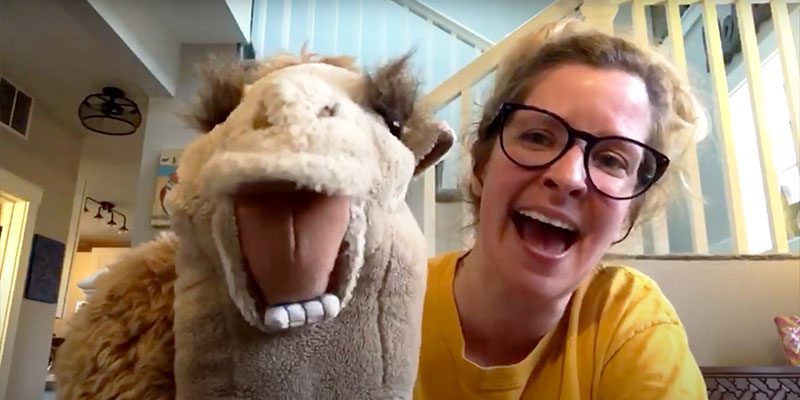By Shelley Harris, Children’s Librarian
Mr. Andy, one of our past librarians, always used to tell caregivers that he could remember the words to “Sweet Caroline” much better than he could remember how to use and program his remote control.
Does that feel familiar? Things set to song are easier to remember! If you have a song for waking up, for cleaning up, for dinner time, or for bedtime, it can make transitions easier, as well.
Songs play an important role in learning to read, because it helps kids hear how words are built and how they break down, with one syllable for each note.
Try some of these activities together to help kids along the path to reading and to add a little music to your day!
Watch these videos
Miss Jenny loves to sing all the time. Here, she and Ruthie use songs to make themselves feel better. What songs make you feel better? Share them with your kids! Kids can appreciate good music of all kinds, not just those meant for them.
You can start with a song, and then extend it so much farther! Here, we play a song about dinosaurs by Laurie Berkner, and then we find books, rhymes, and activities to go along with the theme.
What else can you do?
- Pop on Fruit Salad by the Wiggles, and then make your own fruit salad. Sing the Peanut Butter and Jelly song while you make a sandwich. Or make up your own song narrating what you do as you cook. Miss Jenny and Miss Shelley do this all the time—mostly to let their dogs know what is happening. Your kids will appreciate it more.
- Add songs to your day! Angela at Teaching Mama is a former teacher and has rhymes and songs to help with transitioning to new activities.
- Listen to a song, and then draw it out! It will help kids practice their listening and understanding skills. What does Old MacDonald’s farm look like? Draw a picture of Miss Jenny singing with Ruthie, or of me picking peaches at the orchard.
- Move to the music! Clap, stomp, or jump to the beat, or model emotions by listening and moving your bodies to different songs. Classical music is especially great for this, but anything works. Move slow when the music is slow, and fast when it’s fast. Does it make you feel excited, happy, sad, or mad? Act that out!

About Shelley
Shelley is a children’s librarian with a passion for early literacy, serving and celebrating the disability community, and exploring technology. She can often be found practicing storytime songs with her black lab, Bingo.

